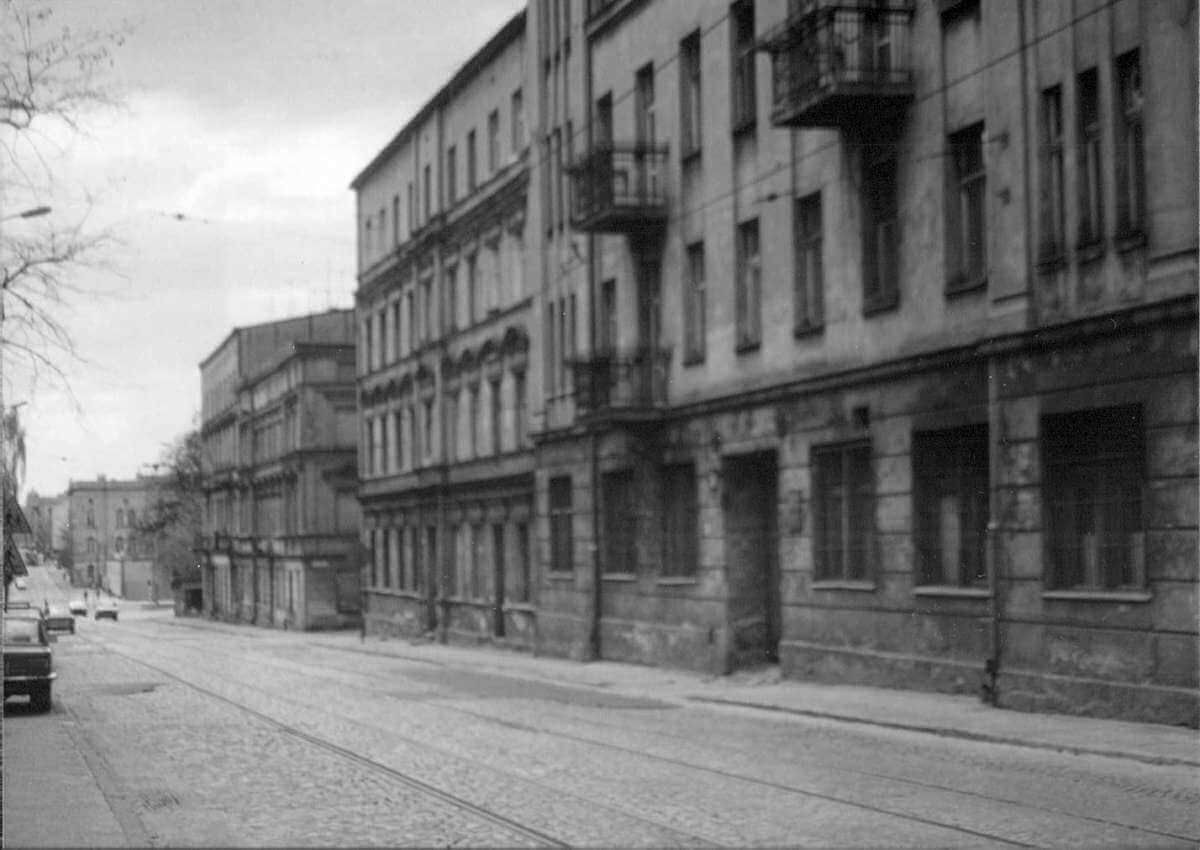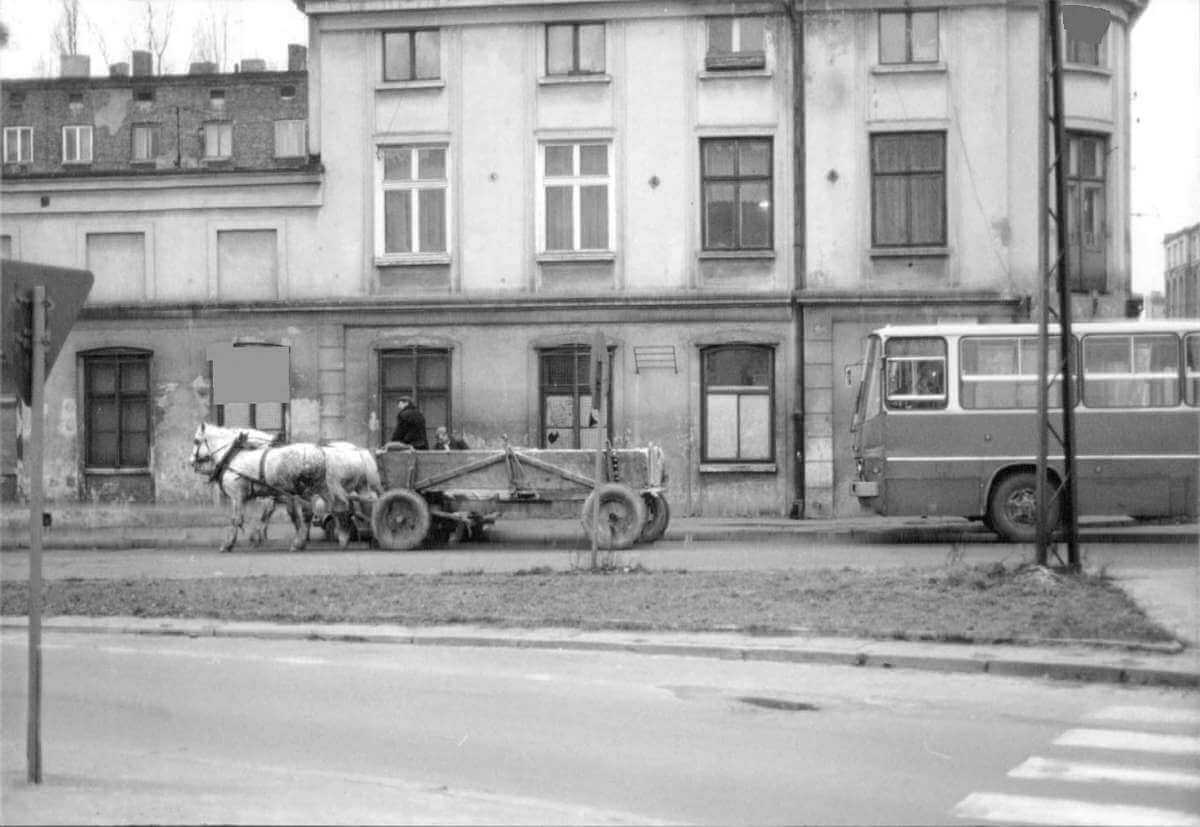This book is dedicated to Dr. John Nemo (1942-1993), The Dean Himself.
***
In late August of 1989, I arrived in Poland for the first of two years of Senior Fulbright Lectureships in American Studies at the University of Łódź. These were years of remarkable political and economic changes in Poland (and throughout the former East Bloc), transformations which interested people everywhere, including folks back in the United States. A couple of newspapers requested articles, which I wrote on a manual typewriter I bought in Poland and mailed via Polish Postage back to the States, but always in the back of my mind was the idea of a book on Poland. After all, my U. S. professorship and my Fulbright fellowship were based partly on my publications, both scholarly and popular, in journals, magazines, and books. The material is there, right outside your door, David—grab your notebook and camera, and get busy.
The material is there, right outside your door.
I returned to the States in 1991 with several articles already published, several additional pieces typed out, and several ideas outlined on paper or in my head. While playing catch up on matters in Minnesota, I returned periodically to the book that became Poland in Transition. It was not published until 1994, and perhaps the wait was worth the effort: the book got good reviews, brought several enthusiastic letters (including one from Duke basketball coach Mike Krzyzewski), and for a small-press book sold well (especially in Chicago). Poles found it “interesting,” as I learned on biannual return visits to Łódź, and when I returned to Poland in 2012 for another round of teaching American Studies at the Lodz International Studies Academy, Gazeta Wyborcza published an interview with me, posting several of my photographs on line with the interview. “Thank you for giving me my country back,” e-mailed one reader.
Thank you for giving me my country back.
I continue to write and publish books and articles both popular and scholarly, but this is the age of on-line, not in-print. Many people read my colleagues’ blogs, but few read my books. Royalties even on my Bob Dylan book are $0. And what the hell—I am at the top of my university’s pay scale, well compensated for my teaching and writing over the years. Listen to your colleagues, Dave: go for the readers and forget about the dollars. Thus this project to make Poland in Transition (text and photos) as accessible as possible to folks all over the world. Free of charge. If you want a printed book, you can find them new or used, on on-line book stores (if you order directly from Ellis Press, you will receive an autographed copy). But if you just want to enjoy the stories and photos of Poland during those remarkable years or transition, here they are, thanks to the efforts and expertise of Marek Jedliński, who arranged all this and is now working on an on-line edition of my earlier book, A Generation in Motion: Popular Music and Culture in the Sixties. Thanks again, Marek.
***
“I got a Nikon camera, I love to take photographs…”
Paul Simon
The following essays were written at various moments during my two year stay in Poland as a Fulbright lecturer in American culture at the University of Łódź. They were prompted on the one hand by my need to fix that remarkable adventure on paper, to explore the political and social landscape, my own reaction to that landscape, and my own self in the landscape… and on the other hand by American curiosity about life in Eastern Europe. Over the past three years that curiosity has shifted eastward to Russia, but Poland is still news, and people seem as fascinated as ever by details of my stay there.
Through the eyes of Polish television, I saw the dissolution of the Polish Communist Party, …
1989 to 1991 brought dramatic changes in Eastern Europe, in Poland, and in Łódź, Poland’s second largest city. Through the eyes of Polish television, I saw the dissolution of the Polish Communist Party, the opening of the Berlin Wall and the subsequent unification of Germany, and (Christmas of 1989, replayed incessantly in private homes, in public offices, on monitor screens in Warszawa Centralna Train Station) the execution of Romanian dictator Nicolae Ceausescu. With my own eyes I saw the arrival in Polish stores of sugar, toilet paper, bananas, cans of diet Coke, copies of the International Herald Tribune, boxes of Fruit Loops cereal, genuine Levi jeans and Benetton sweaters; the inflation of bus and tram tickets from 30 to 1800 złotych; the opening of dozens of private shops along Piotrkowska in Łódź and in cities all across the country, and the closing of most Pewex hard currency shops which sold, in fall of 1989, almost all luxury items available in Poland; trains packed with Polish peddlers headed for Berlin, Prague, and Budapest (and, one gray day in August 1991, lines of grim-faced Soviet peddlers rushing home to a nation whose president was under house arrest, in jail, or possibly dead). I saw the names of communist heroes purged from parks and boulevards, Stalinist memorials hoisted from their pedestals and trucked off to the junkyard of history. By summer 1991, I saw Fiats, Mercedes, VWs and Ladas jamming the hopelessly inadequate road system of a city where, in the fall of 1989, I could have walked in absolute safety, at any time of day or night, down the center of any city avenue or boulevard.

Sometimes I think each of these pieces should bear its own date: year, month, even week and day. Each time I thought I’d figured Poland out, Poland was no longer as I had it figured. The country seemed to reconfigure itself every three months, and looking around me now, I scarcely recognize the landscape to which I came. Of course my status as an outsider and my perspective on events (from the street up) only obfuscated matters, but possibly confusion itself is the constant, the essence of country and people. Does anyone really know what’s going on in Poland? Ask three Poles, the saying goes, and get four opinions. A phrase I heard from natives and foreigners alike— “one of those Polish deals” —is no joke. When I read that the Polish Beer Party elected sixteen members to the Sejm, that a “Party of the Bald” and a “Congress of Polish Eskimos” registered for the 1993 elections, that in May 1992 Prime Minister Hanna Suchocka failed a vote of confidence by a single vote because one supporter overslept, I couldn’t help thinking to myself, “Poland is ever and always Poland.”
Ask three Poles, the saying goes, and get four opinions.
Rereading these pieces, I find impatience mingled with affection. They contain much criticism, but I hope readers, especially Polish readers, find tenderness in the honesty. My affection is genuine, something both Michelle and I felt from our first moments in Poland; much of the impatience, I have come to believe, is projected: less a dissatisfaction with Poland than a fear of what I see America becoming, the land of Mediocrity empowered and enthroned. The American phone system(s) work not much better these days than the Polish phone system; compared to bureaucrats at U.S. Immigrations— hostile, incompetent, arrogant, lazy—Polish civil servants are models of civil service. Free speech, privacy, and pursuit of happiness are a hundred times more threatened by American Neo-Puritans masquerading as political correctivists than by anything I encountered in Poland. At least once a week some news item sets me to thinking, “This country has become a speech, glance, and thought police state. Laws are in the book. We are East Bloc, 1989.”
Part of Poland’s attraction for me was in fact the opportunity to live among real people confronting real problems: scrounging for food, housing, clothing, gasoline, good medical care, even warmth and clean air and potable water in a land where all were scarce; keeping a job in a nation without unemployment insurance; sustaining one’s modest hopes and visions through complex and dangerous economic and political reconstructions. In contrast, American problems—at least those most attended by media and courts—seemed the trivial complaints of middle class victim princesses bruised by a pea, a case of Solutions in Search of Problems. Who really cares whether Clarence Thomas discussed porno flicks with Anita Hill, what Marge Schott said on the telephone, or what Woody Allen’s heart desires? Even those Americans who battle daily hardships akin to what I saw in Poland are fewer in number, and their position certainly less desperate: it is to the U.S. that Poles come, hungry for illegal, exploitive, low- paying employment. And it is from the U.S. they depart two or three years later… with $75,000 in their pockets.

If my view of Poland was distorted by projected anxieties and romantic adventuring, it was not clarified by increasing familiarity. The closer I looked, the more I saw… and the less—not the more—I thought I understood. Another two years in Poland and I would have been as unable to interpret Poland as I am able to explain America. (“You’ve been talking about the American Dream for the past three days,” one student told a 1990 panel of Fulbright lecturers in American Culture, “and not one of you has defined the term.” “Well, well, well,” we all said; “America is complicated and ‘American Dream’ is difficult to define.” “Not at all,” she replied: “the American Dream is driving your truck 200 kilometers per hour down an empty road, the tape deck playing at top volume, throwing empty beer cans out the window behind you.”)
If I couldn’t always interpret events, I could speculate. And I can report what I saw. The words and images of this adventure ride on their own detail.
Trees sometimes blocked my view.
I can’t say I have the story right. There seem to be so many stories. Some may be fables, although they had the ring of truth and are stories worth retelling. Perhaps, Poland being still in medias res, there is no complete story yet, just a series of images, many a little blurred. It was a quick trip, really, and people were on their best behavior around Americans. I traveled at dusk. Much of the country was closed for renovation. Our plans changed quickly and without notice. Trees sometimes blocked my view.
But I can tell you now what I saw then: she was very beautiful, graceful as a willow and fine- featured, stylishly dressed in black and white. She smiled when I waved, but turned her back quickly as I raised my camera. Then she disappeared into a bloc of flats.

***
It’s the first chapter and the introduction of the book by David R. Pichaske. Visit our website next week to read the next part of this extraordinary journey to Poland between 1989 and 1991.
***
![Political Critique [DISCONTINUED]](https://politicalcritique.org/wp-content/uploads/2015/09/Political-Critique-LOGO.png)
![Political Critique [DISCONTINUED]](https://politicalcritique.org/wp-content/uploads/2015/09/Political-Critique-LOGO-2.png)